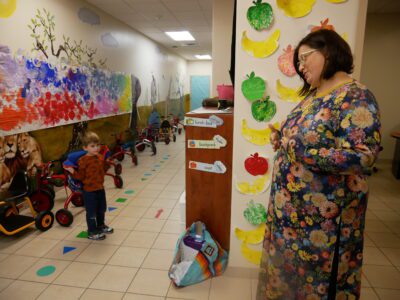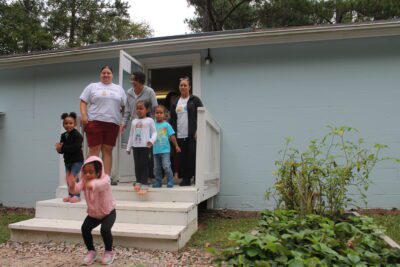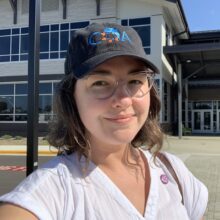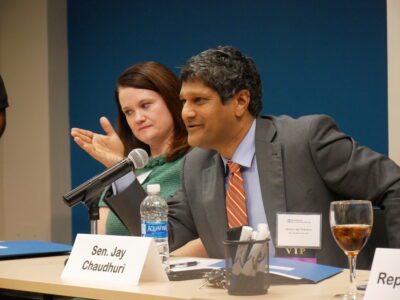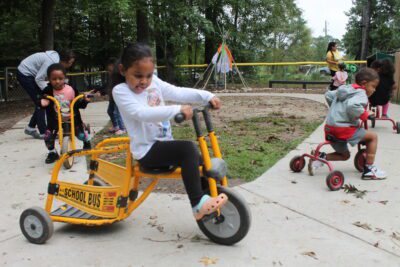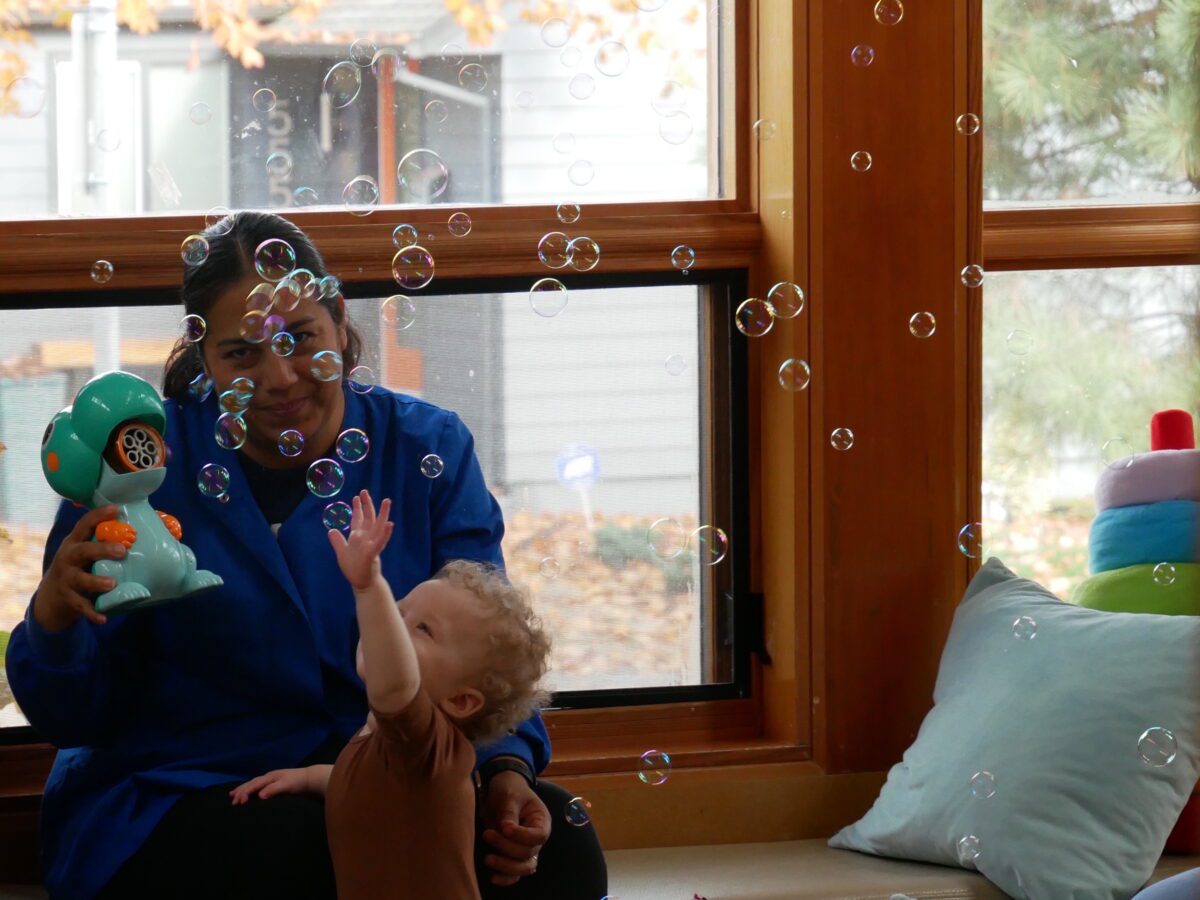
|
|
Highlights
- Thirty years ago, North Carolina was a national leader in recognizing the importance of early care and education and investing in it accordingly — but that investment stagnated in the 21st century.
- EdNC visited five states that have stepped up as leaders — Michigan, Massachusetts, Vermont, Oregon, and New Mexico — to see what lessons they had for North Carolina.
- We found four effective strategies those states used to move toward making early care and education a public good: advocacy from the business community, grassroots organizing, streamlining governance, and identifying/creating new funding streams.
- Experts told EdNC that North Carolina is well-positioned to embrace these strategies to regain its reputation as a champion for young children.
When North Carolina led the nation in early childhood policy and investment at the turn of the century, the consensus behind its approach was that investing in early childhood was an investment in our state’s future.
Thirty years after the creation of Smart Start, North Carolina has become the nation’s top state for business.
But after the state established the nation’s first quality rating system for child care, and then created a high-quality public preschool program, public investment in child care stagnated. Our system is now being held together with pandemic-era funding that will run out this summer.
Parents, teachers, advocates, and other early childhood experts expect a wave of site closures as we approach — and tumble over — that funding cliff.
Some other states aren’t facing this crisis because they’ve learned what North Carolina once knew: Investing in early childhood is an investment in their states’ economic futures.
“We have decades of knowing how to do this,” Ariel Ford, director of our state’s Division of Child Development & Early Education (DCDEE), told EdNC.
That’s part of why North Carolina is primed to be a leader again.
We just have a few new lessons to learn.
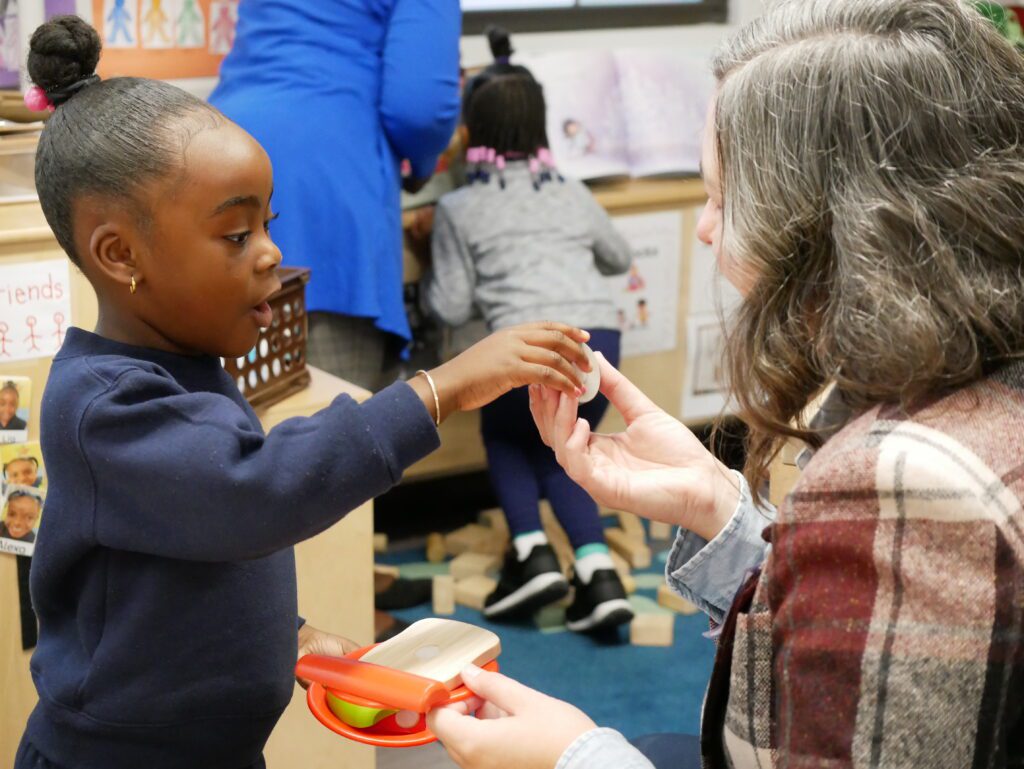
Systemic problems need systemic solutions
EdNC’s early childhood team, with the help of student researchers at Duke’s Sanford School of Public Policy, identified five states that recognize child care as a systemic challenge in need of a systemic solution. At the end of 2023, we visited Michigan, Massachusetts, Vermont, Oregon, and New Mexico, speaking with child care teachers, providers, advocates, organizers, business leaders, and other experts to learn how they got to where they are now.
Through our travels, we identified four strategies that most of these states have in place. Back home, we spoke with more than a dozen child care stakeholders in North Carolina to understand what it would take for our state to join — or even surpass — these states as leaders in early childhood policy and investment.
“The states that you’re looking at see this as a systemic issue and not the small, ‘It’s your problem, you deal with it,’ kind of thing,” said Whitney McCoy, a research scientist at Duke’s Center for Child & Family Policy.
A Michigan model that shares the cost of child care between state government, businesses, and parents is spreading across that state, and soon will be piloted in North Carolina. In Oregon, leaders are tackling child care access from several angles with a new statewide early childhood department at the helm. In Massachusetts, the state is replacing federal relief dollars to avoid the child care cliff, and localities are expanding pre-K.
And in Vermont and New Mexico, recent legislative wins set up those states to create universal early care and education systems.
Experts in North Carolina agreed that our state could learn from approaches elsewhere.
“First and foremost, we have to recognize this is a systemic problem and that it’s going to take a systemic solution,” said Kristi Snuggs, president of the Child Care Services Association. “That’s something we’ve been saying for 30 years in North Carolina. I think the pandemic put that extra emphasis on it, and really made it become something that is really about the economic vitality of the state.”
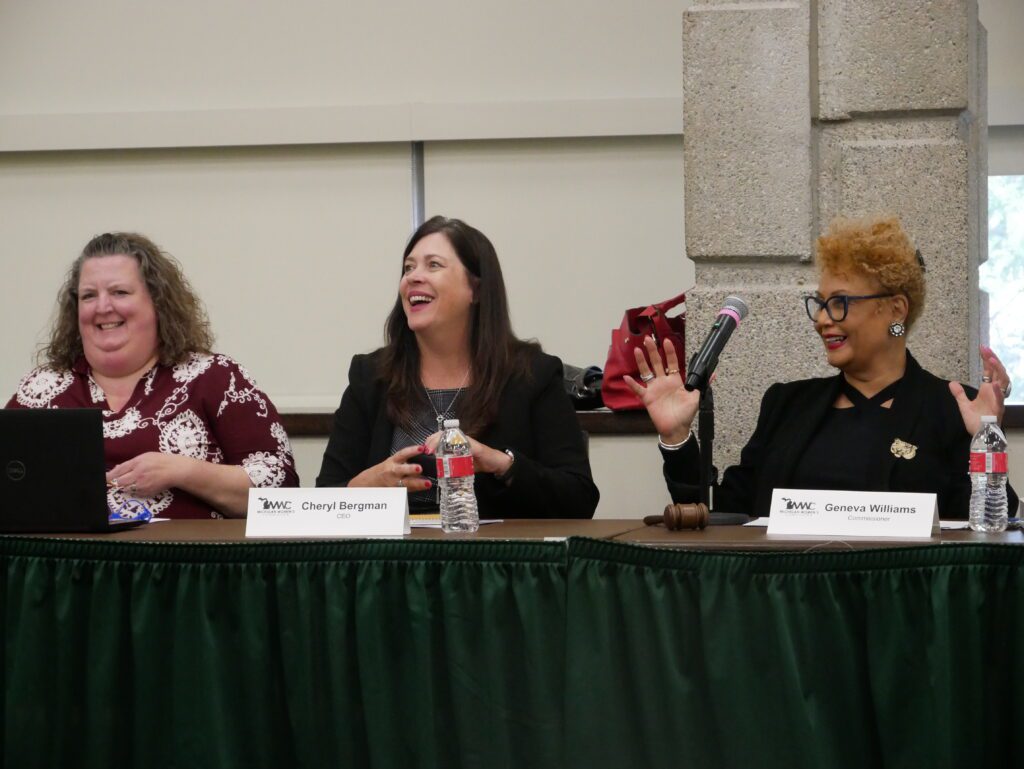
Advocacy from the business community
Lessons from leading states
States leading early childhood policy are doing so with support from their business communities.
In many cases, policy leaders told EdNC, this support was not just helpful, but necessary for progress.
In Michigan, it was cross-sector leaders on the state’s Women’s Commission who heard of child care concerns from their parent employees and launched MI Tri-Share in response.
The program relies on businesses to cover a third of the cost of eligible employees’ child care. The other two-thirds is split between the employee and the state.
Employers are pitching in with an understanding that turnover costs them more than their share of that child care cost. Plus, recruitment is easier when companies offer benefits that parents desperately need, participating business owners told EdNC.
Models based on this program are catching on elsewhere, including Kentucky and New York. North Carolina will try one this year.
Business leaders also are showing up at statehouses to push for public policy and investment, and they’re showing up in communities to organize efforts that increase access to child care.
Advocates at Let’s Grow Kids (LGK), a Vermont nonprofit created to push for child care investment, assembled a team of business leaders from across the state and led a six-week sprint on early care and education.
Aly Richards, CEO of LGK, said business leaders at first wanted to see the budgets of child care programs, confident the problems could be solved with smart financial management. Then they showed them those budgets.
“They’re like, ‘Oh, I understand, this is a market failure. It’s a business model failure,’” Richards said.
In other words, child care businesses cannot create the desired product (high-quality care) at a price that is affordable for most parents. Treasury Secretary Janet Yellen in 2021 called child care “a textbook example of a broken market.”
Some of the Vermont business leaders also wanted to open on-site programs, Richards said. Advocates then explained the factors that would be draining on those operations, including a shortage of early childhood teachers.
“It’s not systemic, it’s not equitable,” she said.
Once the business leaders got on board that public investment was the only answer, LGK advocates gave them a list of Vermont’s revenue sources and asked them to choose a funding lever. The business leaders did an analysis, chose a payroll tax, and pushed for it in the legislature.
“Each of them said, ‘Tax me,’” Richards said. “Vermont makes more money, I make more money, my employees make more money, and we pay off this payroll tax surcharge, basically, before half the year’s over. That was the sort of final thing that pushed us over the finish line.”
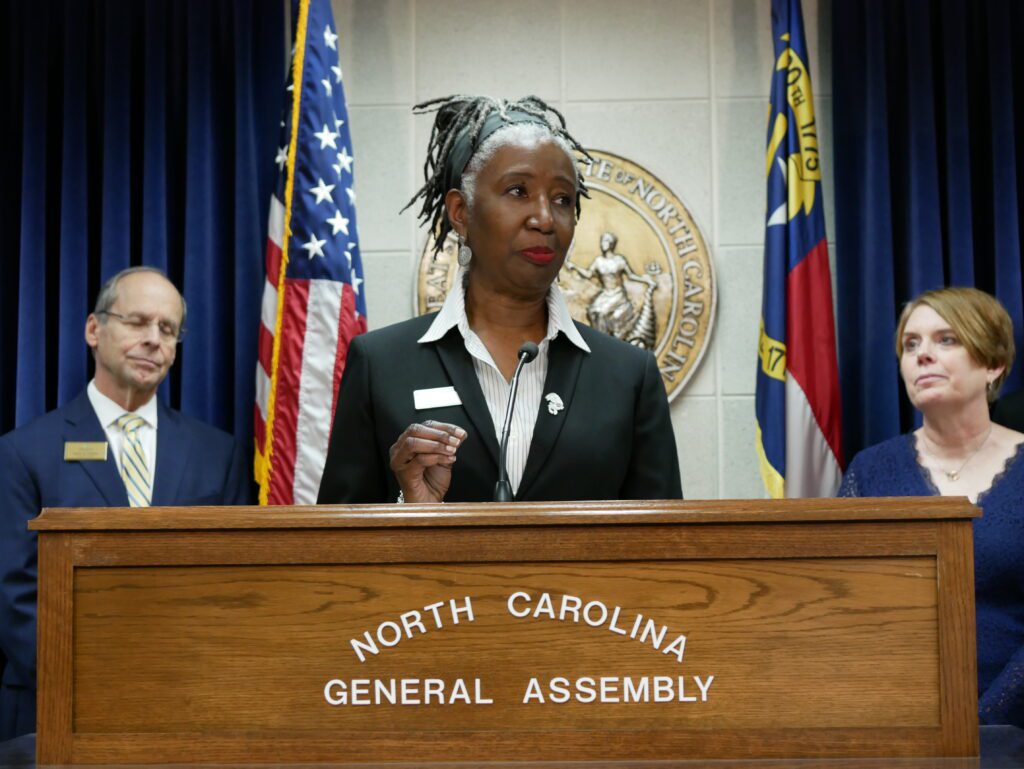
Opportunities for North Carolina
North Carolina has been ranked the top state for business by CNBC for two years in a row, largely due to our strong workforce and economy.
But access to affordable, high-quality child care is not in CNBC’s methodology.
“We will not be able to maintain those rankings if we do not factor in childcare for the workforce that we hope to recruit and that we hope to retain,” said Ereka Williams, vice president of education for Dogwood Health Trust.
When companies try to relocate employees to North Carolina, or entice out-of-state workers to move their families here, often they find that child care is unavailable or unaffordable.
“Companies are coming here and they’re telling me that people are declining moving here, declining a job because of it,” said Lisa Finaldi, community engagement leader for the NC Early Childhood Foundation.
For decades, North Carolina leaders have recruited companies using millions of dollars in tax incentives.
“When we are recruiting new businesses like Apple or VinFast, why isn’t [child care] part of our recruitment package?” asked Allison Goff, director of state engagement for the Hunt Institute.
Since the pandemic, more and more companies are realizing the crucial role that access to high-quality, affordable child care plays in their ability to recruit and retain working parents.
“It was really seen as a family problem, and COVID let us see that it is not, that business has an investment in a strong child care system,” Ford of DCDEE said.
Organizations like the NC Chamber of Commerce along with the Chamber Foundation, as well as individual business leaders, have started rallying behind early childhood care and education.
Rep. Ashton Clemmons, D-Guilford, has seen that trend in her role alongside Rep. David Willis, R-Union, and Sens. Jim Burgin, R-Harnett, and Jay Chaudhuri, D-Wake, as co-chairs of the early childhood caucus in the General Assembly.
“I think that’s one of the biggest steps of progress that we’ve made in the past few years in the early childhood advocacy lane,” said Clemmons, “and it hasn’t gotten over the hump yet to being significant enough to get the investment that we hope to see.”
Many North Carolina experts we spoke to pointed to a new child care business liaison position at the Department of Commerce as another sign of progress.
“It shows that there’s momentum,” said Jessica Carter, director of communications for the North Carolina Partnership for Children. “This crisis has been around for a while, but it’s become impossible for us all to ignore.”
In rural counties such as Wilkes and Ashe, chambers and local business leaders are also showing their commitment to supporting working families.
And there’s the upcoming Tri-Share pilot based on Michigan’s model.
Amy Cubbage, president of the North Carolina Partnership for Children, told EdNC that she feels hopeful about the small pilot because “it leans into our DNA” by building on Smart Start’s public/private partnership model.
Experts in Michigan warned that the Tri-Share model works best in places with readily available child care, typically urban hubs.
Back home, Jason Carrow, owner/operator of Care-O-World Early Learning Centers in Beaufort and Pitt counties, shared a note of caution on behalf of rural counties — 78 of our state’s 100 counties, according to the NC Rural Center.
“Folks need to be careful that business involvement doesn’t exacerbate the current kind of two-class system,” Carrow said.
That’s a concern for Javier Gonzalez in his role as chief operations officer for East Coast Migrant Head Start Project as well.
“We support the agricultural industry, it’s the top two or three industry in the state of North Carolina,” Gonzalez said. “But because this population is considered invisible, they’re temporary in the community, they have uncertain, questionable legal status, so their voice is minimized.”
There’s an opportunity for North Carolina’s business leaders to be innovators of child care solutions for rural counties and in industries that depend on migrant workers.

Grassroots organizing
Lessons from leading states
The most powerful advocacy efforts in the states EdNC visited centered the people most affected by the policies they were backing.
On the local level, the activism of parents with young children led to the passage of Multnomah County’s Preschool for All initiative in Oregon, which is working toward universal preschool access for 3- and 4-year-olds through a marginal tax on high-income residents and workers.
The Parent Accountability Council (PAC) formed a vision for pre-K access that went beyond state program standards.
“We wanted classrooms that look like us,” said PAC member Lydia Gray-Holifield. “We wanted classrooms that spoke our languages. We wanted classrooms that greeted our parents when we walked in the door. We want our kids to feel safe and comfortable.”
The PAC held regular community focus groups and cafes, and then brought recommendations to the table.
Their input is now baked into the Preschool for All initiative, leading to program elements that are rare in public pre-K programs. They made sure the pre-K day lasted the full workday, that exclusionary discipline was not an option, that parents had a pathway to become teachers, and that all types of community providers were involved.
In some cases, successful advocacy is not about reinventing the wheel, but about consistency and determination, leaders told EdNC.
Advocates in Massachusetts created a simple tool that kept everyone in the early childhood community on the same page throughout and since the pandemic: the 9:30 call.
In March 2020, advocates started holding an open Zoom meeting with the same link every day, five days a week, to share challenges, ask questions, and tell decision-makers how policies were playing out. The call outlasted the pandemic as a way to coordinate efforts and connect early childhood professionals across the state with experts and elected officials.
“It has changed the way we do everything,” said Amy O’Leary, executive director of Strategies for Children, a nonprofit. “I call it unfiltered advocacy.”
More than 1,400 people have joined the calls, with a daily attendance of 75 to 100. The call has helped a broader geographic representation be involved in creating a statewide Early Childhood Agenda. Now other leaders are looking at the tool as a case study for building community virtually.
In both Vermont and New Mexico, advocates rallied behind electoral candidates who were committed to passing early childhood policies.
“They basically removed the barriers at the legislative level, and put in people that were friendly to early childhood,” said Catron Allred, director of the Early Childhood Center for Excellence at Santa Fe Community College.
Let’s Grow Kids in Vermont created a dashboard of 40,000 people who have engaged with the campaign to pass Act 76 over a decade. That’s 5% of the state’s population. Advocates sat at farmer’s markets and fairs to talk to passersby about child care and ask for contact information or signatures.
When a legislative committee needed to hear about child care issues, it would take only a couple of minutes to send out an accessible form through the dashboard for people to share their stories.
“When we started using that, it really upped the game,” said Shayla Zammuto, senior field manager for LGK. “Like thousands and thousands and thousands of messages into legislators each session — it’s really hard to ignore.”

Opportunities for North Carolina
North Carolina has no shortage of organizations working to expand access to early childhood care and education, and to improve its quality and affordability.
The challenge might be that because there are so many groups, policymakers get multiple messages from multiple angles, North Carolina experts told EdNC.
“There has to be something that allows us to be ‘one band, one sound,’” Williams of Dogwood Health Trust told EdNC, referencing her self-proclaimed status as an “old band geek.”
The North Carolina Early Childhood Foundation’s “First 2,000 Days” campaign was one recent effort to bring advocates together behind a single message: The brain’s architecture is built in the 2,000 days between birth and kindergarten.
Experts in New Mexico told us this type of messaging was a key to moving early childhood policy and investment forward in their state, because investing in the development of children’s brains produces enormous returns over their lifespans.
But in Vermont, the more successful advocacy message was based on urgency: Parents need child care so they can participate in the workforce right now.
That’s Shay Jackson’s message.
Jackson is a home-based provider and owner of Modern Early Learning Academy in Clemmons, North Carolina. She’s also the organizer behind the Triad Self-Care Support Group, a peer group of home-based providers.
Jackson’s message as a local advocate is simple: “Your small business will not be able to survive without me. I keep your employees’ children, and without that, then they can’t go to work.”
The fact that investing in early care and education has positive effects for two generations — young children whose brains will be the future, and parents’ participation in the present workforce — can make choosing the “right” message for a given state difficult.
And the more messengers there are, the harder that can be to coordinate (though the ongoing work of the Care and Learning Coalition, or CandL, holds promise).
Experts in North Carolina noted that there’s high turnover at the helms of several nonprofit and advocacy organizations in the state. That may present an opportunity for new leaders to find new ways of collaborating, from the ground up.
Another challenge in North Carolina that is not present in Michigan, Massachusetts, Vermont, Oregon, or New Mexico is racial disparity between the state’s labor force and its political leadership, dating back to the antebellum era.
“We have, especially, LatinX and African American [women], minorities, that are hands-on doing the work, and then we have primarily Caucasian males who hold the power at the top,” Jackson said.
It’s the work of grassroots organizers to bridge that gap. But it’s incumbent on policymakers to listen to those on the ground, advocates told EdNC.
Pointing out that Latinos are the fastest-growing population in North Carolina, Gonzalez of East Coast Migrant Head Start said, “We cannot afford to be ignored any longer. And the more that those decision-makers do towards accommodating and hearing that voice, the better off it will be.”
Susan Butler-Staub, policy and community engagement coordinator for NC Early Education Coalition, hopes some of those grassroots organizers consider pursuing leadership positions themselves.
“The more we can encourage folks, whether it’s women, whether it’s parents of young children, people who’ve had lived experiences with all of these issues, to get into those positions, the better off we’re going to be,” Butler-Staub said.
There are already examples of that at the local level.
Kate Goodwin, owner/operator of Kate’s Korner Learning Center in Durham, joined the Chamber of Commerce in Chapel Hill when she started running a child care center there.
“All I’m doing is asking them to partner with me so I can get their expansion of the people that they invite to the table, so that we can make this a child care issue that can be solved by child care workers,” Goodwin said.
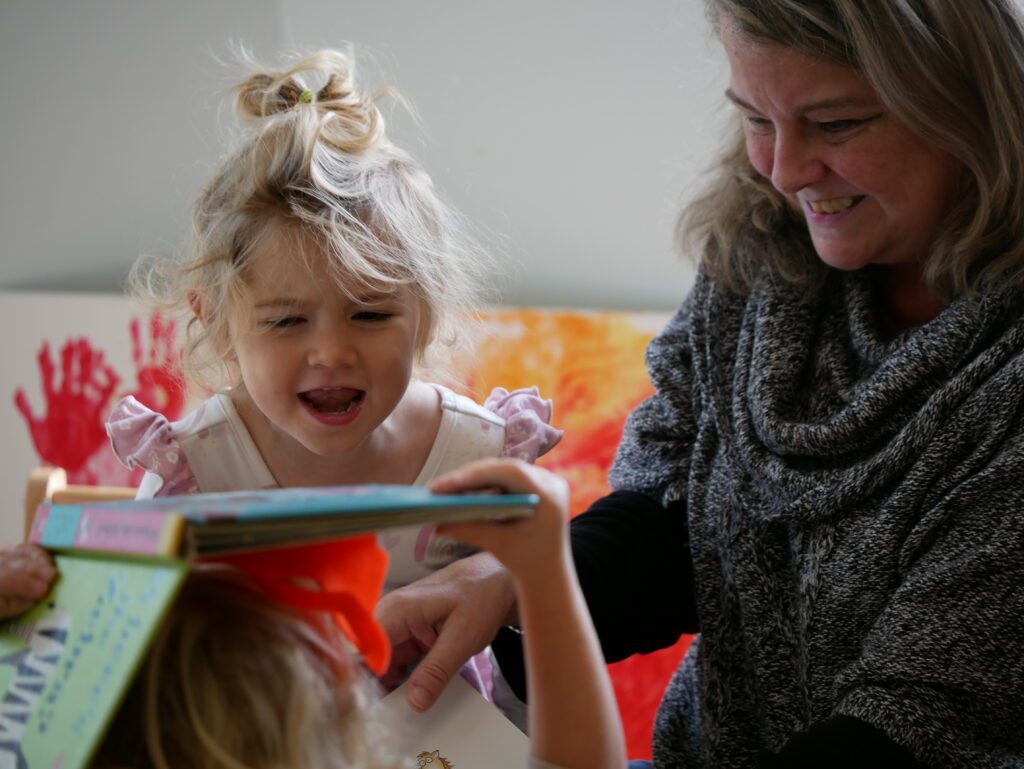
Streamlining governance
Lessons from leading states
Governance structures matter, experts from every state told EdNC.
While EdNC was in Michigan, a new department was announced, the Department of Lifelong Education, Advancement, and Potential, that brings together programs from early childhood to higher education, including MI Tri-Share. It was a necessary step for the statewide expansion and long-term sustainability of the program, said Cheryl Bergman, CEO of the Women’s Commission.
In Vermont, a public-private partnership called Building Bright Futures provided essential support to the Democratic-led legislature and the Republican governor’s office during the passage and implementation of Act 76.
The organization sits outside of state government, and its members advise both the legislature and the executive office on early childhood policy. They bring together a network of 500 people monthly through 12 regional councils. They do not advocate for any particular policy, but present data and input from across the state to elected officials.
“It’s really about saying, based on these conversations with community partners, with families, with the state advisory council, and our other network bodies, this bill is well-aligned with what we’re hearing,” said Anna Brouillette, the group’s policy and program director.
The group is able to hold the state’s early childhood vision through political turnover, a thread we noticed in several states. In New Mexico, for example, the Legislative Finance Committee — a body that combines fiscal analysis and program evaluation — was able to act as a nonpartisan, research-backed voice through several gubernatorial administrations and legislative turnover.
In 2019 Oregon created a standalone early childhood department. New Mexico followed suit in 2023.
The creation of new departments has helped bring policies and programs from several agencies under one umbrella to better coordinate services and make navigating those services easier for families. It’s also made sure early childhood issues are not lost within larger departments and conversations.
“We wouldn’t be able to have conversations in the same holistic way and coordinated way and leverage the funding that we have from the feds and the state together to solve any of these issues — access, quality, workforce — that exist in our field, without a cabinet-level agency,” said Sara Mickelson, deputy cabinet secretary of New Mexico’s Early Childhood Education and Care Department.
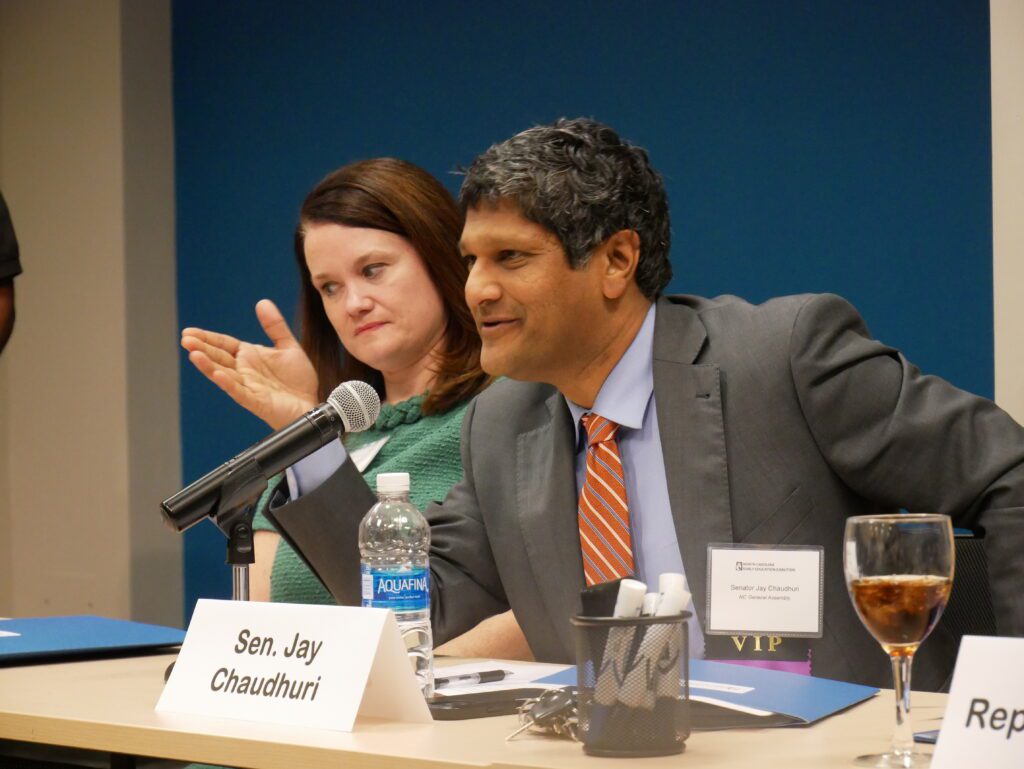
Opportunities for North Carolina
Since 2011, most aspects of early childhood care and education in North Carolina have been consolidated under the Division of Child Development and Early Education (DCDEE) at the Department of Health and Human Services (DHHS).
But the K-12 education is housed under the Department of Public Instruction (DPI).
That leads to what Clemmons refers to as “disalignment” in the legislative process for early childhood issues. Some early childhood policies fall under a process for DHHS, and others fall under DPI. It’s not intuitive for lawmakers, or anyone else involved with the system.
That system includes:
- Licensing – DCDEE oversees licensing for child care centers and family child care homes. The Child Care Commission is responsible for making rules to implement child care laws set by the legislature. North Carolina was the first state to create a Quality Rating and Improvement System (QRIS) that ranks programs on a scale from one to five stars. The commission is recommending changes to that system this year.
- Smart Start – This public/private partnership was established in 1993 to provide support for young children and families to help prepare them for kindergarten. The network consists of 75 local Smart Start partnerships and is managed statewide by the North Carolina Partnership for Children. It is funded by the state legislature as well as private contributions.
- NC Child Care Resource & Referral (CCR&R) – Led by the CCR&R council, this system of 14 regional agencies and 62 local agencies offers technical assistance to early childhood programs and helps families find child care. CCR&R services are located in nonprofits, Smart Start partnerships, and public agencies.
- Child care subsidies – Housed under DCDEE, child care subsidies help low-income families afford child care. Subsidies are distributed by local departments of social services, as well as Smart Start partnerships and CCR&Rs. Subsidies rely mainly on federal funding.
- NC Pre-K – The state’s public preschool program for at-risk 4-year-olds was started in 2001 as “More at Four” and housed in the Office of Early Learning at DPI. It was moved to DCDEE in 2011 and renamed NC Pre-K. Contractors for NC Pre-K can be public school districts (under DPI), Smart Start partnerships, or CCR&Rs. NC Pre-K also relies on federal funding streams.
- Head Start – Head Start is a federally funded preschool program for low-income children ages 3 to 5 and their families. It’s been around since the 1960s and was expanded to infants and toddlers with the creation of Early Head Start in 1994. The NC Head Start-State Collaboration Office is housed in DPI. Federal funding for Head Start and Early Head Start flows through local entities such as school districts, CCR&Rs, Smart Starts, and other community action agencies.
It’s easy to understand why legislators (and even folks working in the field) get lost in the weeds of such a complicated system.
While some states created new departments to streamline governance — which several experts in North Carolina also suggested — Clemmons said there are political barriers to that.
“It’s a very difficult argument to make in North Carolina because the people making decisions believe that we already have too much government,” Clemmons said.
While our system may not be streamlined, some experts argue it’s at least functional.
“The way that we have it set up is complicated, but it also works,” Butler-Staub said. She added that there are “bigger fires” to put out before tackling governance.
Henrietta Zalkind, executive director of the Down East Partnership for Children, told EdNC that unless we get greater public investment in the system, creating a new department wouldn’t make a difference.

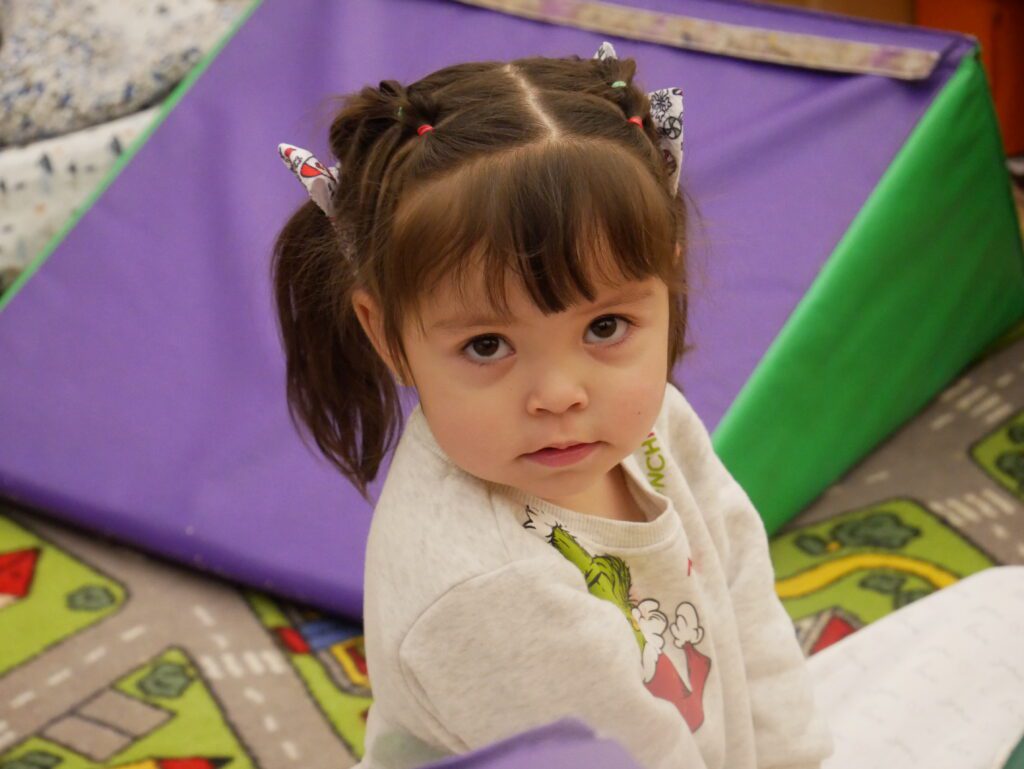


Identifying/creating new funding streams
Lessons from leading states
Early care and education is expensive. The cost is being subsidized now through high costs for parents and low wages for teachers.
As state governments play a bigger role in covering that cost, they are finding new sources of funding to help parents afford care and to raise teacher pay.
In some cases, those are funds earmarked for early childhood out of a larger pot of money.
The Land Grant Permanent Fund, through a constitutional amendment in New Mexico, has been opened to early childhood, sending about $150 million to the Department of Early Childhood Education and Care annually. The fund, the largest of its kind in the country, is financed by leases and royalties on non-renewable natural resources in the state. It will send $1.34 billion to beneficiaries (mostly K-12 public schools and universities) this fiscal year.
In Oregon, the Student Success Act of 2019 sends 20% of its annual $1 billion distribution to the state’s Early Learning Account.
Every year about $10 million from the account is reserved for the Early Childhood Equity Fund, which goes exclusively to culturally specific organizations “that focus on closing opportunity gaps for children and families who face historical and current inequities due to factors such as race, income, zip code, or language,” its website reads.
In other states, increased taxes or new mechanisms are sending consistent public funding to early childhood systems.
For example, New Mexico’s legislature in 2020 established the Early Childhood Education and Care Fund, which is funded by oil and gas revenue and dedicated to early childhood programs and services. The fund sent $150 million to early care and education last year, with projections to send $486 million annually by 2028.
And just last year, Act 76 in Vermont established a Child Care Contribution, consisting of a 0.44% payroll tax and a 0.11% self-employment income tax. The tax will provide $125 million in child care funding annually.
Each of these streams is specific to the state’s context and resources. But they are “all based on a key principle that public investment is the missing piece of the puzzle,” said Richards from LGK in Vermont. “Period.”

Opportunities for North Carolina
Experts across North Carolina agreed that what the state needs most — and is the furthest from getting — is a massive public investment in early childhood care and education.
But we’ve done it before.
“A curious place that North Carolina sits is that we created funding streams a few decades before most other states,” Ford of DCDEE said. “North Carolina kind of jumped out front, and then we flatlined.”
We heard lots of suggestions for where public funding could come from: the lottery, a child tax credit, local opioid settlement funds, and fully funding Leandro.
But one suggestion kept coming up.
According to a September 2023 report from the Office of the State Controller, North Carolina’s “rainy day fund” — surplus revenue set aside for future budgetary needs — is estimated to contain $4.75 billion, with another $125 million expected to be added next year.
“The rainy day fund has been sitting around for a rainy day, but this is a rainy day, this is a stormy day,” Snuggs said.
Wherever policymakers find the money to invest in our state’s future, the time to do it is now.
“We’ve been talking about the pot boiling over, but now the pot really is about to boil over,” Clemmons said.
With pandemic-era funding running out after June 2024, child care providers are bracing for the worst.
Shay Jackson, a home-based provider, told EdNC that without new public funding, she won’t be able to remain open.
“They may possibly lose a great quality center, because I am not gonna be able to sustain and I’m trying to think ahead,” Jackson said. “I’m literally like, updating my LinkedIn account.”
Paula Cline, executive director of the Alexander Partnership for Children, said a local provider who’s been in the field for 50 years told her, “I don’t know how anybody really is going to survive it. It’s going to be catastrophic.”
Closures have already begun out west, and they’re likely to continue statewide.
“I think folks are going to be shocked, come August and September, if no funding is in place. I see 20 to 40 percent of child care facilities closing,” Carrow, an owner/operator out east, told EdNC.
But that outcome is entirely preventable.
“One way or another, government funding is going to have to support child care at a base level,” Carrow said. “And the sooner North Carolina realizes that and has something in place, the better it will be.”


